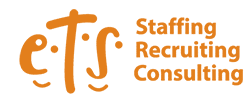Creating and sustaining a diverse work environment isn’t easy, particularly one that evolves seamlessly with the employment climate. Consider this: today’s offices can contain up to 5 different generations of workers, meaning managers today oversee teams with ages ranging anywhere from 18 to 80.
Who are we working with?
- Traditionalists: 1922 – 1945
- Baby Boomers: 1945 – 1964
- Generation X: 1965 – 1980
- Generation Y / Millennials: 1981 – 2000
- Generation Z / iGen: 2000 – Present
Millennials and Generation Z are the “up-and-comers” — today and tomorrow’s leaders — so it’s no surprise they’re at the forefront of most employer conversations surrounding workplace development. But the reality is: many Baby Boomers and Traditionalists plan to continue working for at least another decade. In fact, 53% of workers ages 60 and older say they’re postponing retirement until their 70s, according to a recent survey from CareerBuilder.
Why?
Victoria Duley, Economic Developer from The Development Corporation, weighed in with her commentary at the North Country Chamber of Commerce’s recent “Human Capital Summit”, an event prompting discussion about the “multi-generational workplace”.
“I think the Great Recession of 2007 and 2009 and the recovery some years beyond that really created the perfect storm of reasons why not to retire for a lot of people. Studies show, as Americans are living longer, we’re working longer. And the Gallup polls, the AARP polls, they all show that these people are planning to work, at least part time, past the traditional retirement age of 62 or 65. And everytime they run those polls, the percentage increases.”
The Great Recession, interrupted financial planning, longer life expectancy — whatever the reason, the American Society on Aging projects that workers ages 55 and older will comprise more than 25% of the workforce by 2020.
This multi-generational workforce is a reality — yet, aging workers still aren’t a top concern for many employers. In a recent survey, 49% of respondents said their employers have neglected to help their careers grow along with them, while 15% even say older workers are a hindrance to young talent.
To refute that 15%, Victoria commented, “The challenge [older workers staying in the workforce] created earlier, perhaps less so now, was for those trying to break into the workforce — those trying to break out of the service sector and get their first real professional job — and then fight for advancement opportunities against people who are already in the workforce. But I think perhaps we see some of those opportunities easing with the employment rates being where they are in real recent years.”
Easing the Tension
Each generation brings unique opportunities and challenges to the workplace. As age increases, so do the chances of disability and a demand for reliable, comprehensive health insurance options. And not all Traditionalists and Baby Boomers want to work full time. Is working from home an option for them? What steps are in place to ensure a seamless transition of roles? Employers must take these groups’ wants and needs into consideration to create a dynamic, collaborative team environment that makes employees want to stick around, regardless of retirement planning.
“Inter-generational teams and collaboration are absolutely key. As folks begin to transition out of the workplace, what we’ve seen really seems to work is when companies create teams, pairing people up, not necessarily by seniority. But they’re bringing in some that younger talent, mixing groups up so that it’s a benefit in the whole, and folks are learning by doing — then you have retention benefits from that.”



